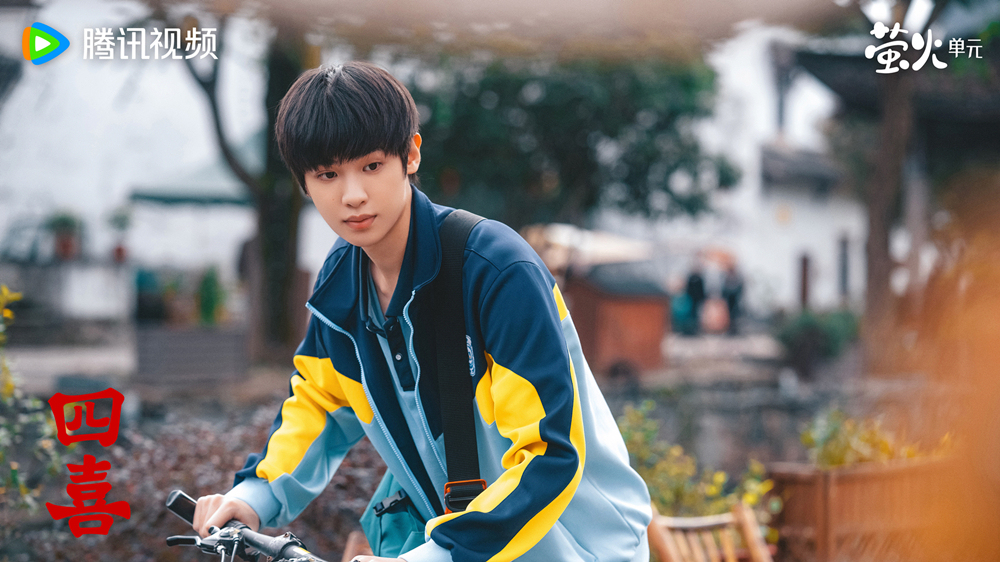
Recently, the TV series "My Altay" has been popular on both the screen and the Internet. The vigorous vitality contained in the natural and cultural landscapes of the filming locations complements the simple and healing plot, opening up a cultural experience that cleanses the soul for the audience.

Stills from My Altay
Not only "My Altay", a number of popular dramas with strong regional colors have become highlights of the integration of the cultural and tourism industries, fully demonstrating the hub function of film and television art in connecting different fields. Checking in at the same filming locations of film and television dramas and taking the same photos has become a popular social method. Following the short drama "Your Island Has Arrived", you can feel the poetic beauty of the colorful flowers and green bamboos on the banks of the Peach Blossom Spring in Changde, Hunan; visit the Moss Saint Garden and the International Hotel in Shanghai, and taste the TV series "Flower" in the pork ribs and rice cakes and butterfly cakes... The local customs and customs linked by scenery, architecture, and food in the drama have enriched and even reshaped the aesthetic space of cities and villages, and enhanced the popularity and reputation of these places.
While we are enthusiastically discussing "Film and Television Empowering Cultural Tourism", we might as well change our perspective and consider how local cultural resources can assist film and television creation, allowing film and television and cultural tourism to engage in a "two-way rush".
The narrative of a play needs to be established in a certain context, which includes the time and space background of the story, as well as the emotional tone of the work. Cities and villages should not be satisfied with being merely included in the frame of the drama and enjoying the short-lived "Internet celebrity" effect, but should be truly integrated into the plot construction and story narration, becoming an essential element to strengthen the theme of the work. The camera of the TV series "City within a City" sweeps across the bustling Lujiazui, and also freezes in ordinary lanes and alleys, which makes people feel warm. Ordinary scenery and popular landmark buildings together shape the unique visual style of the work. They go from "blurred background boards" to the front of the stage, and properly play the expressive function of the lens.
The selection of film and television shooting locations cannot stop at the superficial level of beautiful scenery, delicious food, landmark buildings, etc., but a systematic consideration of a place should be made to "be broad and subtle", explore the unique connotations of different regional cultures, and integrate them into the plot creation. The selection of locations and the production of dramas based on the dramas should not only use recognizable geographical spaces to refresh the visual presentation and make the works pleasing to the eyes, but also grasp the spiritual core of local cultures, use the unique charm of regional cultures to feed back the plot, and make the works moisturizing. The drama "Hometown, How Are You" hides the spiritual temperament of Chengdu in the fireworks on the street corners and the rich dialect, inadvertently evoking the homesickness of many people. In the active discussions of netizens, we have seen the efficient mobilization of the audience's empathy and desire to speak by the customs and customs of a city. Hand in hand with the unique temperament and heritage of the city, and communicate with the people who travel from south to north in the city, the plot and the shooting location complement each other, and the audience will achieve resonance and empathy in the blending of scenes.
In recent years, some places have promoted the integration of culture and tourism by setting up support funds and improving service models, actively building nests and attracting talents for film and television creation, and effectively promoting the enrichment of creative themes and the improvement of artistic quality. Sichuan has vigorously supported film and television projects for many years and launched a number of loud and positive dramas. "All the Way Forward", which tells the story of New China's construction of the Chengdu-Chongqing Railway from scratch, was filmed in Neijiang, a relatively small but culturally distinctive place. It was filmed on location in the main place where the story took place that year, and some historical marks left in the local area were integrated into the narrative, adding a sense of reality to the reproduction of the hot construction scene. In order to meet the needs of "one-stop shooting", Fujian is creating a "1-hour shooting circle in Xiamen, Zhangzhou and Quanzhou" to provide multiple options for framing and shooting works.
In the future, fully tapping into local cultural resources will open up more possibilities for film and television creation and help incubate more high-quality masterpieces with distinct local characteristics. On the basis of leveraging their own geographical and cultural landscape advantages and characteristics, various regions also need to continuously explore ways to link culture and tourism, provide more professional support for film and television shooting, and achieve sustainable development in terms of in-depth integration of culture and tourism and extension of the industrial chain, so that more filming locations can go from being "Internet celebrities" to "long-term success."
Empower a play with a city, and understand a city in a play. Only when the two are spiritually compatible and mutually complementary can the work be vivid and lively, and only such poetry and distance can make the audience yearn for it.
(This article was published in People's Daily on May 24, 2024, page 20.)


